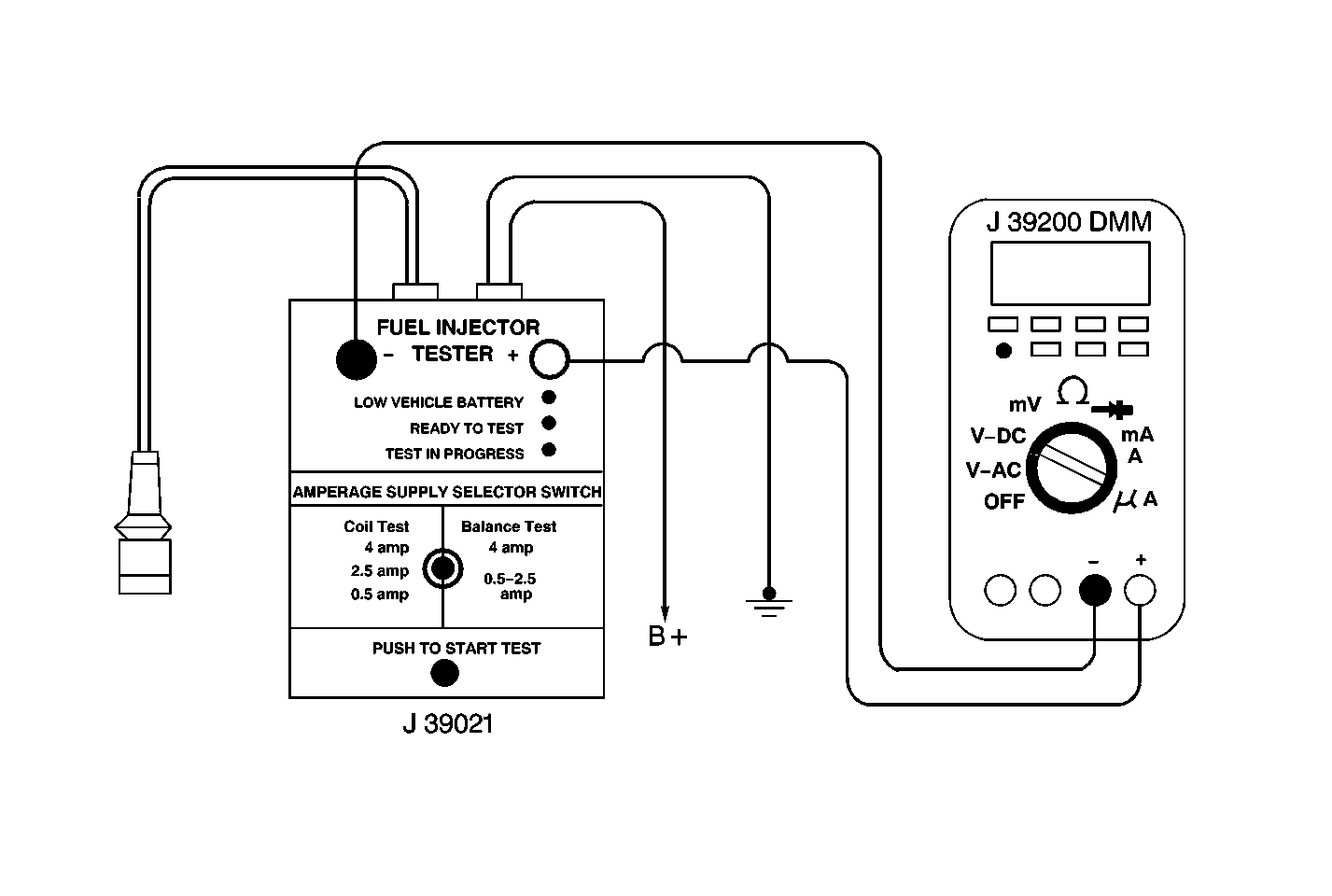
Test Description
The numbers below refer to the step numbers in the diagnostic table.
Caution: Remove the fuel tank cap and relieve the fuel system pressure before servicing the fuel system in order to reduce the risk of personal injury. After you relieve the fuel system pressure, a small amount of fuel may be released when servicing the fuel lines, the fuel injection pump, or the connections. In order to reduce the risk of personal injury, cover the fuel system components with a shop towel before disconnection. This will catch any fuel that may leak out. Place the towel in an approved container when the disconnection is complete.
-
The engine coolant temperature affects the ability of the fuel injector tester to detect a faulty fuel injector. If the engine coolant temperature is NOT between 10° C and 35° C (50°F and 95°F), allow the engine to warm or cool as needed.
-
The first second of the voltage displayed by the DVM may be inaccurate due to the initial current surge; therefore, record the lowest voltage displayed by the DVM after the first second of the test. The voltage displayed by the DVM should be within the specified range (refer to the example). The voltage displayed by the DVM may increase throughout the test as the fuel injector windings warm and the resistance of the fuel injector windings changes. An erratic voltage reading (large fluctuations in voltage that do not stabilize) indicates an intermittent connection within the fuel injector.
Step | Action | Value(s) | Yes | No |
|---|---|---|---|---|
1 | Was the Powertrain On-Board Diagnostic (OBD) System Check performed? | -- | ||
Is the engine coolant temperature within the specified limits? | 10° C-35° C (50° F-95° F) | -- | ||
Notice: In order to prevent flooding of a single cylinder and possible engine damage, relieve the fuel pressure before performing the fuel injector coil test procedure. Important: Check the engine coolant temperature again in order to ensure that the correct table is being used. Important: The voltage reading may rise during the test. Did any fuel injector have an erratic voltage reading (large fluctuations in voltage that do not stabilize) or a voltage reading outside of the specified limits? | 5.6-6.5 V | |||
4 | Replace the faulty fuel injectors. Refer to Fuel Injector Replacement . Is the replacement complete? | -- | -- |
